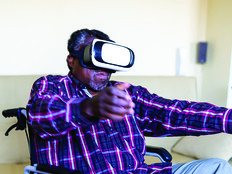4 Tips to Design a Patient-Centric Virtual Reality Program
Doctors have used virtual reality to treat patients for more than a decade, helping to decrease both pain and anxiety for a wide range of patients. With improved hardware and the recent proliferation of mobile-based VR headsets, some hospitals routinely use the technology for virtual tours, patient education and as a distraction during painful procedures.
While VR represents an effective tool for treating a variety of conditions and creating a more positive patient experience, providers must consider a few important aspects when designing such programs. The following recommendations are not medical advice, but rather are meant to help organizations determine how best to deploy VR technology.
1. Know Your Virtual Reality Use Case
Whether you are designing a VR experience to teach patients about their medical conditions or creating a distracting game for kids to play during flu shots, developers must understand the unique parameters that each use requires.
Work closely with physicians, nurses, child life specialists and physical therapists to determine answers to certain questions, including:
- Will the patients be standing, sitting up, or lying down?
- Can they move their arms or head?
- How much are they allowed to move their arms or head?
- How long will the experience last?
- Can the patient wear headphones?
- Who will remain with the patient during the experience?
2. Keep the VR Experience Simple
Most patients and providers have very little experience with VR and often there are incredible time pressures in a clinical setting. Many times, clinicians only have minutes to set up the VR system and teach patients.
Developers must minimize the number of menus and offer quick-start options so that users can jump right into the experience. Make game controls simple and intuitive.
3. Avoid Distressing Virtual Scenarios
There’s nothing worse than a patient being completely immersed in a VR experience, only to have their virtual character be eaten by zombies just before they are stuck with a not-so-virtual needle.
Young children can have a difficult time separating the virtual world from the real world. To that end, developers should avoid violence and include positive messages. Minimize interruptions and keep patients engaged in content.
4. Don't Make Patients Dizzy
Screening patients to determine if they are appropriate candidates for VR is very important. Avoid nausea and motion sickness at all costs in such experiences. Imagine the look on a surgeon’s face if you have to tell them that their patient can’t proceed with a procedure because they are vomiting from spinning upside down on a virtual roller coaster.
Minimize quick or exaggerated movement requirements from patients that might cause them to hit their arms or other body parts against hospital equipment or interfere with a procedure. Reduce unwanted side effects by considering a third-person viewpoint, limiting rotations, avoiding changes to the horizon line and restricting head and arm movements to only a few degrees.









